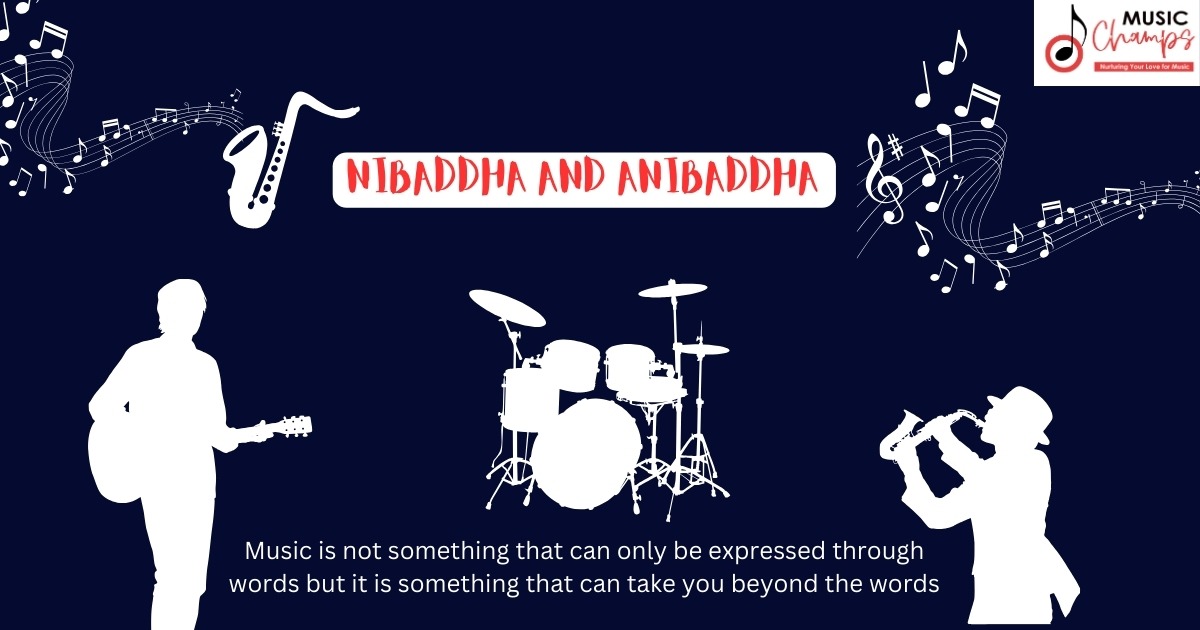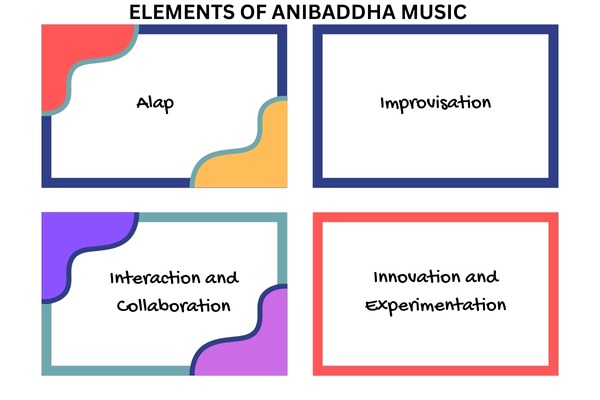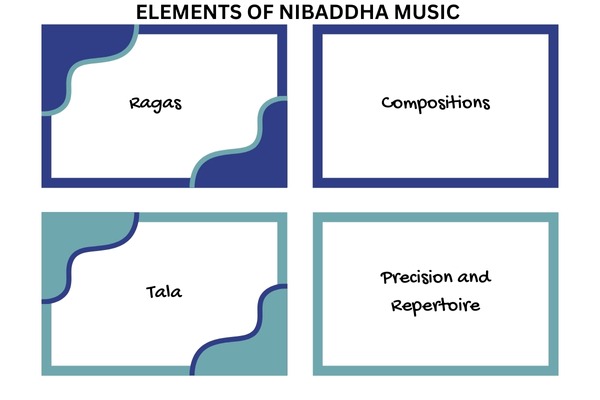...
What is Nibaddha and Anibaddha gaan with their Elements

Music is not something that can only be expressed through words but it is something that can take you beyond the words. Also, if used rightly, words can give a new depth to the expression through music. In this blog, we are going to understand how two different forms of singing make their unique character in the world of music.
Nibaddha music
The word nibaddha means something that is bound and old. In the classical performances of Indian Classical vocals, nibaddha is a part where the performer sings or displays those parts of the performance that are pre-defined and predecided.
Elements of Nibaddha music
- Ragas: It consists of singing different components of the raaga like the aaroh-avroh, pakad, etc.
- Compositions: It involves pre-created compositions like
- Tala: Nibaddha music adheres to rhythmic cycles known as Talas. The beats and rhythm in Talas provide a strong framework for the performance, allowing musicians to create intricate and rhythmic patterns in alignment with the composition.
- Precision and Repertoire: Nibaddha music requires precision and mastery of the chosen Ragas, compositions, and Talas. Musicians build their repertoire through rigorous training and practice, showcasing their skills during performances.
Anibaddha
Anibaddha represents the free-flowing and improvisational aspect of music. This approach fosters spontaneous creativity and encourages musicians to break away from pre-set compositions and explore novel musical expressions. Anibaddha is more prevalent in certain genres, such as Jazz, Indian classical music’s alap and tanpura sections, and various world music traditions.
Elements of Anibaddha Music
- Alap: In Indian classical music, the Alap is an example of Anibaddha expression. During the Alap, musicians embark on a meditative and introspective journey, exploring the melodic contours of a Raga without the constraints of a fixed composition. This section allows for free improvisation, enabling musicians to connect deeply with the Raga’s emotions.
- Improvisation: Anibaddha music thrives on improvisation, where musicians spontaneously create melodies, ornamentations, and rhythmic patterns. This creative freedom enables performers to respond to the energy of the moment, weaving intricate musical tapestries on the spot.
- Interaction and Collaboration: Anibaddha performances often involve interactive and collaborative elements. Musicians engage in dynamic dialogues, responding to and complementing each other’s musical ideas, resulting in a rich and unique musical experience for both performers and audiences.
- Innovation and Experimentation: Anibaddha musicians embrace innovation and experimentation, pushing the boundaries of traditional musical norms. They explore novel harmonies, scales, and rhythmic structures, making each performance an exhilarating and one-of-a-kind journey.

Additional sources
- Lecture-9 | निबद्ध – अनिबद्ध गान – https://www.youtube.com/watch?v=0Baa2RFM2i0
- निबद्ध गान| अनिबद्ध गान| निबद्ध एवं अनिबद्ध गान की परिभाषा| – https://www.youtube.com/watch?v=H_DbFWMXr7c
- निबद्ध एवं अनिबद्ध गान – https://www.youtube.com/watch?v=Yk4JVxafmro



